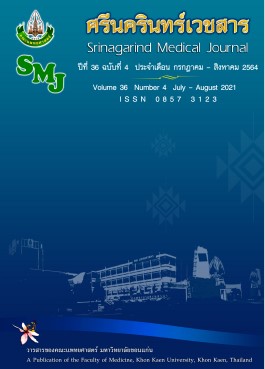Tetrahydrocurcumin Attenuates Hyperglycemia in Diabetic Rats Through Reduction of Insulin Resistance and Oxidative Stress
Keywords:
Tetrahydrocurcumin; Hyperglycemia; Diabetic Rats; Insulin Resistance; Oxidative StressAbstract
Background and Objective: Diabetes is a major global public health problem caused by impaired insulin secretion and action. The complications of diabetes are the leading cause of death in diabetic patients. In the present study, the effects of tetrahydrocurcumin (THU), a strong antioxidant are assessed on plasma glucose, insulin levels, insulin resistance, and oxidative stress in streptozotocin-nicotinamide (STZ-NA) diabetic rats.
Methods: Forty male Wistar rats were randomly divided into five groups: 1) control, 2) control treated with THU (100 mg/kg/day), 3) diabetic, 4) diabetic treated with THU 50 mg/kg/day, and 5) diabetic treated with THU 100 mg/kg/day. Diabetes was induced by injection of STZ 55 mg/kg/day after a dose of NA 110 mg/kg/day. Eight weeks after oral administration of THU, plasma glucose levels, insulin levels, insulin sensitivity, oxidative stress markers including plasma malondialdehyde (MDA) and plasma protein carbonyl, and antioxidant glutathione (GSH) levels were evaluated.
Results: Diabetic rats showed hyperglycemia, insulin resistance, and impaired glucose tolerance, (p<0.05 compared with non-diabetic rats). These alterations were associated with oxidative stress, as the evidence of increasing MDA and protein carbonyl (p<0.05). Moreover, intracellular GSH were significantly decreased in those rats. Treatment with THU in dose-dependently decreased fasting blood glucose levels, improved insulin sensitivity, and alleviated oxidative stress in diabetic rats.
Conclusions: THU exerts a beneficial effect on minimizing hyperglycemia in diabetic rats. The mechanism might involve the glucose-lowering effect by improving insulin sensitivity, and antioxidant activity of THU.
References
2. Olawale F, I IA, U IA, Nwozo SO. Long-term hyperglycemia impairs hormonal balance and induces oxidative damage in ovaries of streptozotocin-induced diabetic wistar rat. Niger J Physiol Sci 2020; 35: 46-51.
3. Saeed S, Waje-Andreassen U, Nilsson PM. The association of the metabolic syndrome with target organ damage: focus on the heart, brain, and central arteries. Expert Rev Cardiovasc Ther 2020; 18: 601-614.
4. Luc K, Schramm-Luc A, Guzik TJ, Mikolajczyk TP. Oxidative stress and inflammatory markers in prediabetes and diabetes. J Physiol Pharmacol 2019; 70: 809-824.
5. Newsholme P, Keane KN, Carlessi R, Cruzat V. Oxidative stress pathways in pancreatic beta-cells and insulin-sensitive cells and tissues: importance to cell metabolism, function, and dysfunction. Am J Physiol Cell Physiol 2019; 317: C420-C433.
6. Shen CY, Jiang JG, Yang L, Wang DW, Zhu W. Anti-ageing active ingredients from herbs and nutraceuticals used in traditional Chinese medicine: pharmacological mechanisms and implications for drug discovery. Br J Pharmacol 2017; 174: 1395-1425.
7. Pari L, Murugan P. Tetrahydrocurcumin: effect on chloroquine-mediated oxidative damage in rat kidney. Basic Clin Pharmacol Toxicol 2006; 99: 329-334.
8. Sangartit W, Pakdeechote P, Kukongviriyapan V, Donpunha W, Shibahara S, Kukongviriyapan U. Tetrahydrocurcumin in combination with deferiprone attenuates hypertension, vascular dysfunction, baroreflex dysfunction, and oxidative stress in iron-overloaded mice. Vascul Pharmacol 2016; 87: 199-208.
9. Murugan P, Pari L, Rao CA. Effect of tetrahydrocurcumin on insulin receptor status in type 2 diabetic rats: studies on insulin binding to erythrocytes. J Biosci 2008; 33: 63-72.
10. Nakmareong S, Kukongviriyapan U, Pakdeechote P, Kukongviriyapan V, Kongyingyoes B, Donpunha W, et al. Tetrahydrocurcumin alleviates hypertension, aortic stiffening, and oxidative stress in rats with nitric oxide deficiency. Hypertens Res 2012; 35: 418-425.
11. Yadav RK, Rawat JK, Gautam S, Singh M, Kumar M, Ansari MN, et al. Antidiabetic activity of mefloquine via GLP-1 receptor modulation against STZ-NA-induced diabetes in albino wistar rats. 3 Biotech 2018; 8: 240-248.
12. Klisic J, Nief V, Reyes L, Ambuhl PM. Acute and chronic regulation of the renal Na/H+ exchanger NHE3 in rats with STZ-induced diabetes mellitus. Nephron Physiol 2006; 102: 27-35.
13. Tietze F. Enzymic method for quantitative determination of nanogram amounts of total and oxidized glutathione: applications to mammalian blood and other tissues. Anal Biochem 1969; 27: 502-522.
14. Szkudelski T. Streptozotocin-nicotinamide-induced diabetes in the rat. Characteristics of the experimental model. Exp Biol Med (Maywood) 2012; 237: 481-490.
15. Hua ZG, Xiong LJ, Yan C, Wei DH, YingPai Z, Qing ZY, et al. Glucose and insulin stimulate lipogenesis in porcine adipocytes: dissimilar and identical regulation pathway for key transcription factors. Mol Cells 2016; 39: 797-806.
16. Hatting M, Tavares CDJ, Sharabi K, Rines AK, Puigserver P. Insulin regulation of gluconeogenesis. Ann N Y Acad Sci 2018; 1411: 21-35.
17. Lo CC, Lin SH, Chang JS, Chien YW. Effects of melatonin on glucose homeostasis, antioxidant ability, and adipokine secretion in ICR mice with NA/STZ-induced hyperglycemia. Nutrients 2017; 9: 1178-1191.
18. Pari L, Murugan P. Effect of tetrahydrocurcumin on blood glucose, plasma insulin and hepatic key enzymes in streptozotocin induced diabetic rats. J Basic Clin Physiol Pharmacol 2005; 16: 257-274.
19. Chen JW, Kong ZL, Tsai ML, Lo CY, Ho CT, Lai CS. Tetrahydrocurcumin ameliorates free fatty acid-induced hepatic steatosis and improves insulin resistance in HepG2 cells. J Food Drug Anal 2018; 26: 1075-1085.
20. Yaribeygi H, Sathyapalan T, Atkin SL, Sahebkar A. Molecular mechanisms linking oxidative stress and diabetes mellitus. Oxid Med Cell Longev 2020; 2020: 8609213-8609226.




